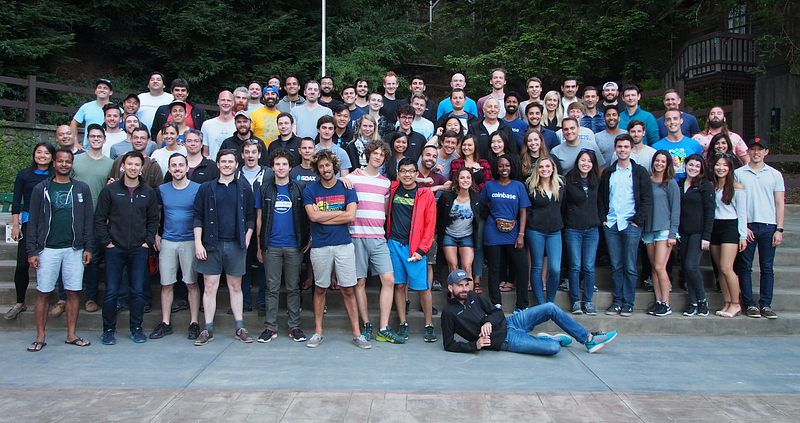What is Coinbase’s strategy? – Brian Armstrong – Medium
At Coinbase, our mission is to create an open financial system for the world. We believe that open protocols for money will create more innovation, economic freedom, and equality of opportunity in the world, just like the internet did for publishing information.
However, an open financial system is difficult to get started because it requires a network effect. Every transaction requires both a sender and recipient who are willing to use the new system.
To overcome this, our strategy is to draw new users into the digital currency space via an initial use case (investment, or currency speculation) that does not require a network effect. This will create the critical mass of people required for the network effect to develop.
Here are the steps:
- First, we will make it easy for consumers to invest in digital currency by building a retail exchange (Coinbase). The differentiators for this product are trust (security, compliance, etc) and ease of use (access to convenient payment methods, intuitive interface, etc). This will allow more people to own digital currency, especially non-technical people.
- Second, we will enable professional traders and institutions to trade digital currency (GDAX). This will support the investment use case in step one, but also scale it by driving larger trading volumes. More liquidity in the markets will reduce volatility of the underlying assets, which is important to enabling the payment network. The differentiator for this product will also be trust (security, compliance, etc) to encourage larger, traditional investors to enter the market.
- Third, we will create a mass market consumer interface for people to start getting value from the payment network (Toshi). Now that a critical mass of early users have been drawn in by the investment use case, the industry is ready for its “Netscape moment”. This product will make it dramatically easier for consumers to use digital currency as a payment network, and for developers to build applications that utilize the payment network.
- Fourth, by lowering the barrier to create new digital currency applications, we’ll see an explosion in the number of ideas tried. We’ll invest in, partner with, or build a number of new applications in this space, including replacements for many of the services people use in finance 1.0. Some examples include merchant processing, remittance, loans, fundraising, venture capital, escrow, credit scores, and more.
Our go to market strategy is different for each phase.
In step one, we attract new users through channels such as referral programs, SEO, and adding easy to use payment methods. With 1M monthly active users or more, we can consider a sufficient critical mass to exist for the later phases.
In step two, we will onboard new institutional traders largely through business development and sales. Our definition of critical mass here is approximately the daily trading volume of ten large publicly traded companies, or $5B in daily trading volume.
Step three is once again a consumer product, and we will drive adoption through a two pronged approach. The first part will be onboarding consumers who are already invested in digital currency from step one, as our initial user base. They will evangelize the product because it has the potential to make their digital currency investments go up in value. The second part will be drawing in new users to the payment network. These will be people with the greatest pain point, who are underserved by the current financial system (such as in developing countries). Our target is to reach 100M monthly transacting users in this step.
In step four, each app or company will have it’s own go to market strategy, ranging from traditional consumer strategies to b2b strategies, driving the ecosystem to 1B monthly transacting users and beyond.
In conclusion, the above steps outline our strategy for accelerating the world’s shift to an open financial system. When we’re successful, it will accelerate the pace of innovation in the world, create more economic freedom, and provide financial services to billions of underserved people.
If this mission is exciting for you, please send us a note.

